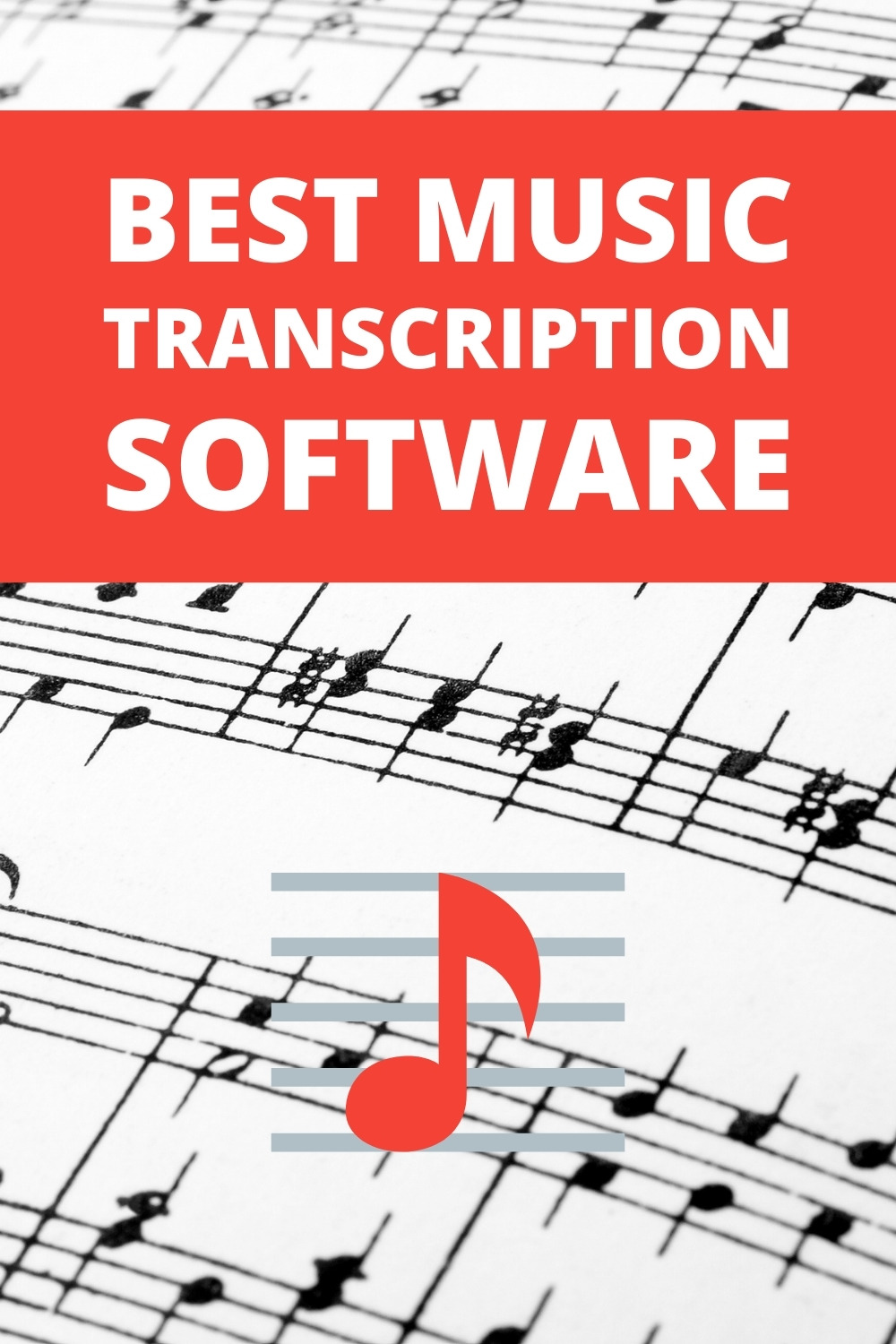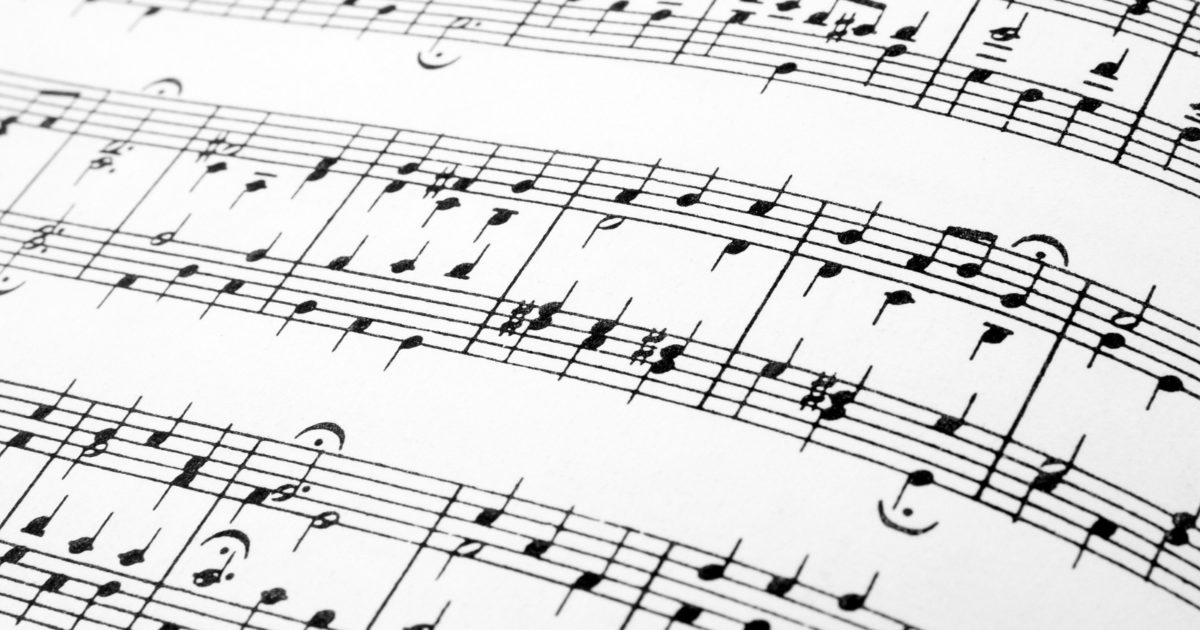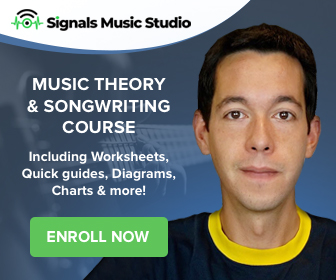Music transcription, the art of writing down a melody or a piece of music in standard music notation, can be a challenging task. You may, for instance, want to notate a popular guitar solo or one of your own songs. This can be quite a hurdle for anyone who doesn’t “speak” music theory. Even if you are adept at writing in standard musical notation, you may want a faster route to getting from start to finish. Transcription software can help you do just that.
The process of transcribing music with technology is complex and intriguing. The intricate nature of music makes it challenging for even the latest artificial intelligence and machine-learning algorithms to decode. It’s kind of like using Google translate to decipher the sounds of multiple people speaking similar and contrasting languages from a sample.
So whether you’re a music teacher who needs a helping hand, a gigging musician and bandleader, or a pro session guitarist, here are your top 5 choices for music transcription, based on your requirements.
AnthemScore
Price: Editions start from $9, 30-day free trial
Who’s it for? Instrumentalists with limited knowledge of music theory who need automatic music transcription for audio files that contains solo instruments.
AnthemScore is one of the best applications for transcribing a solo instrumental track to musical notation. Simply open an audio version (mp3 file or WAV file) of the song you want to transcribe in AnthemScore and let it automatically detect notes and generate sheet music.
Transcribing solo instruments is easy with this transcription tool.
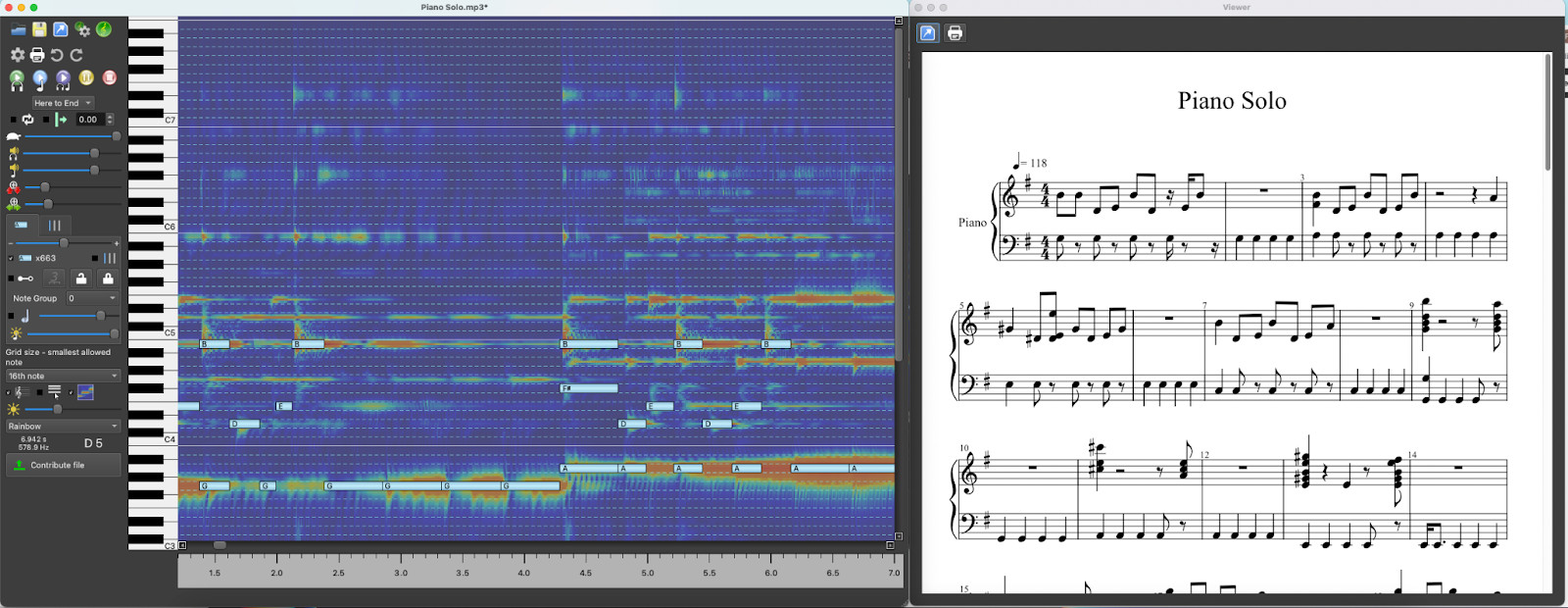
You are provided with a nice-looking “spectrogram” and can edit notes manually on the “piano roll”. One of the notable features of AnthemScore is that it hints at “candidate notes”, colored in white (see below). The software fixes notes based on a “likelihood score”, and you can manually adjust this, for an area or the whole score, to turn candidate notes into real ones.
You have an option to play back the original audio version, the transcribed notes, or both. This helps with cross-checking to verify how well the automatic detection has fared. You also have the option to change the key/ time signature, edit measures, shift bars, change tempo, and more. You can export to MusicXML format, and refine the MusicXML files in notation software like MuseScore.
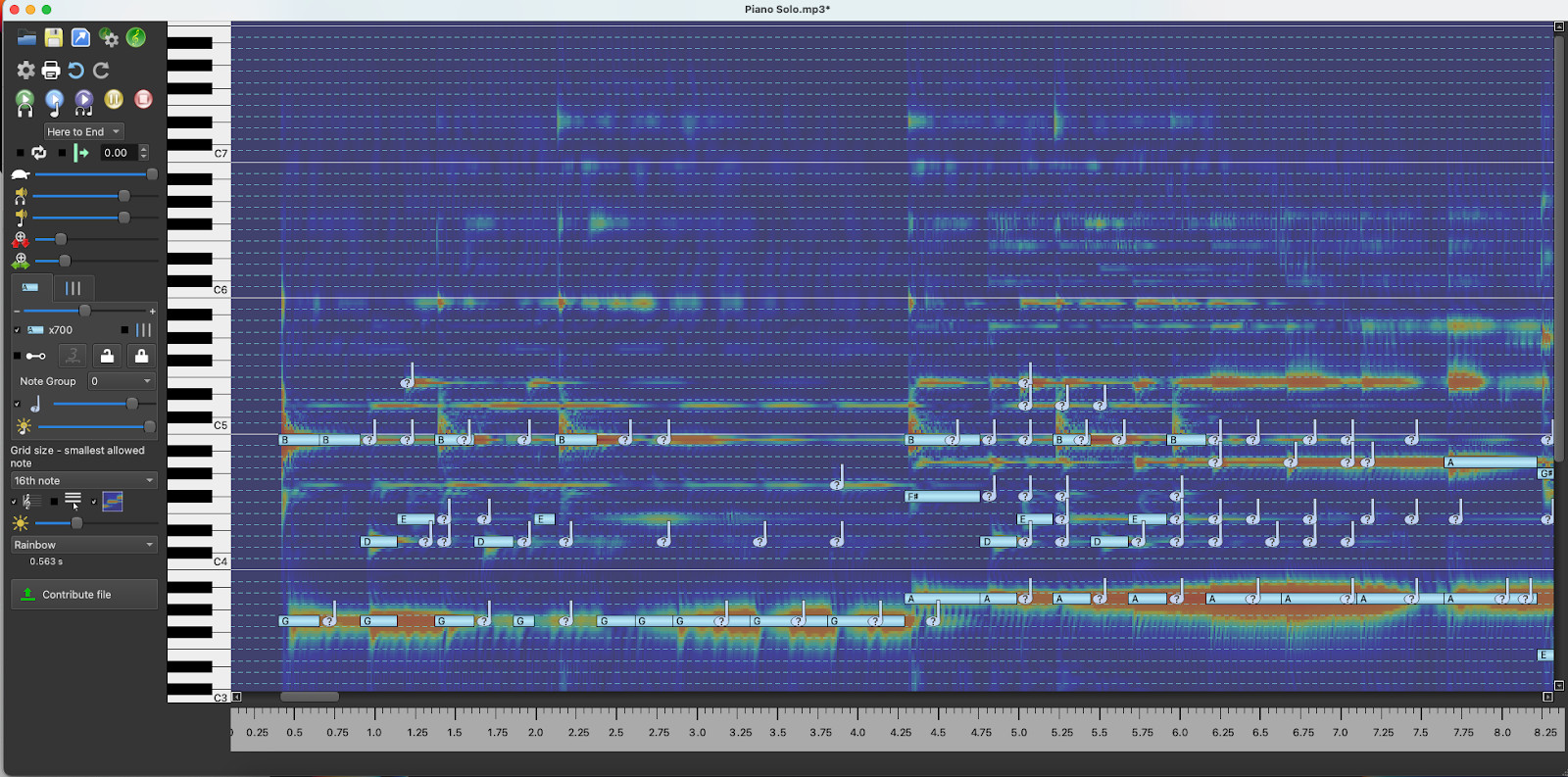
All this being said, I noticed that AnthemScore fails when you input a multi-track recording. Take for example this audio track comprising vocals, piano, and drums. What I got from AnthemScore was a transcription in which everything is laid out on a piano grand staff.
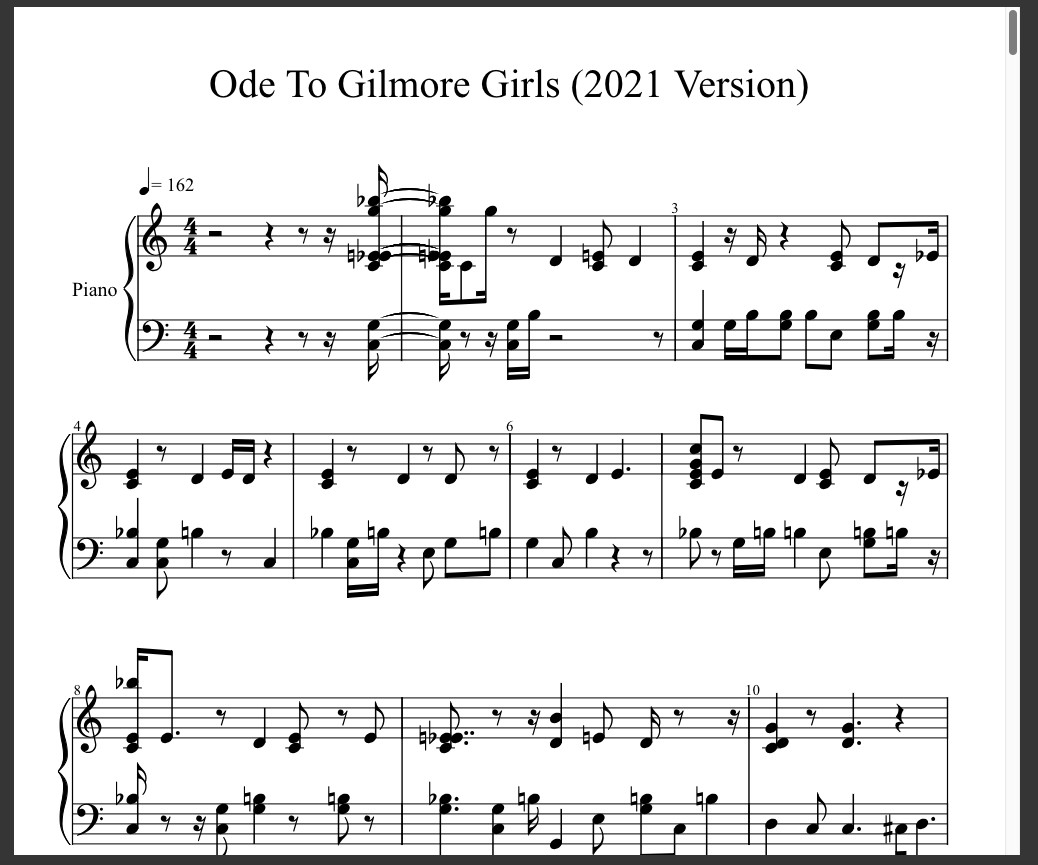
The output won’t be useful to the majority of musicians. It may be difficult even to refine your in a software like Sibelius, depending on its complexity.
This mashed up score could be helpful for harmonic analysis or serve as a starting point for manual transcription, something a musician would do. A workaround would be to run your audio file through software capable of extracting tracks (discussed below), and then provide them individually to AnthemScore.
A final point to note is that AnthemScore is made for songs recorded at A440 pitch standard.
Transcribe!
Price: $39, 31-day free trial
Who’s it for? Intermediate/ professional musicians looking for music transcription software with handy digital signal processing functions to help transcribe music.
Transcribe! Provides powerful music transcription tools for musicians, with some caveats. It does not automatically detect notes or instantly generate sheet music. What you get instead is a set of practical tools that make the transcription process easier.
At first glance, Transcribe! gives the impression there’s very little going on here, as if it’s just another audio player. However, its greatest value comes from the powerful digital signal processing capabilities and ease of use.
It’s easy to add a section, measure, and beat markers to the track during playback. You even have an option for automatic subdivisions. Once you have marked up the sound signal, you can zone in on a particular segment and make an accurate transcription using the editing tools. For example, you can slow down the track (to any percentage) and loop a segment for easy playback.
As an aid to music transcription, Transcribe! shows a spectrum of the audio’s content at a particular point, along with note and chord guesses. The green dots on the virtual keyboard below show the probable notes. This is one of its best features, in my opinion.
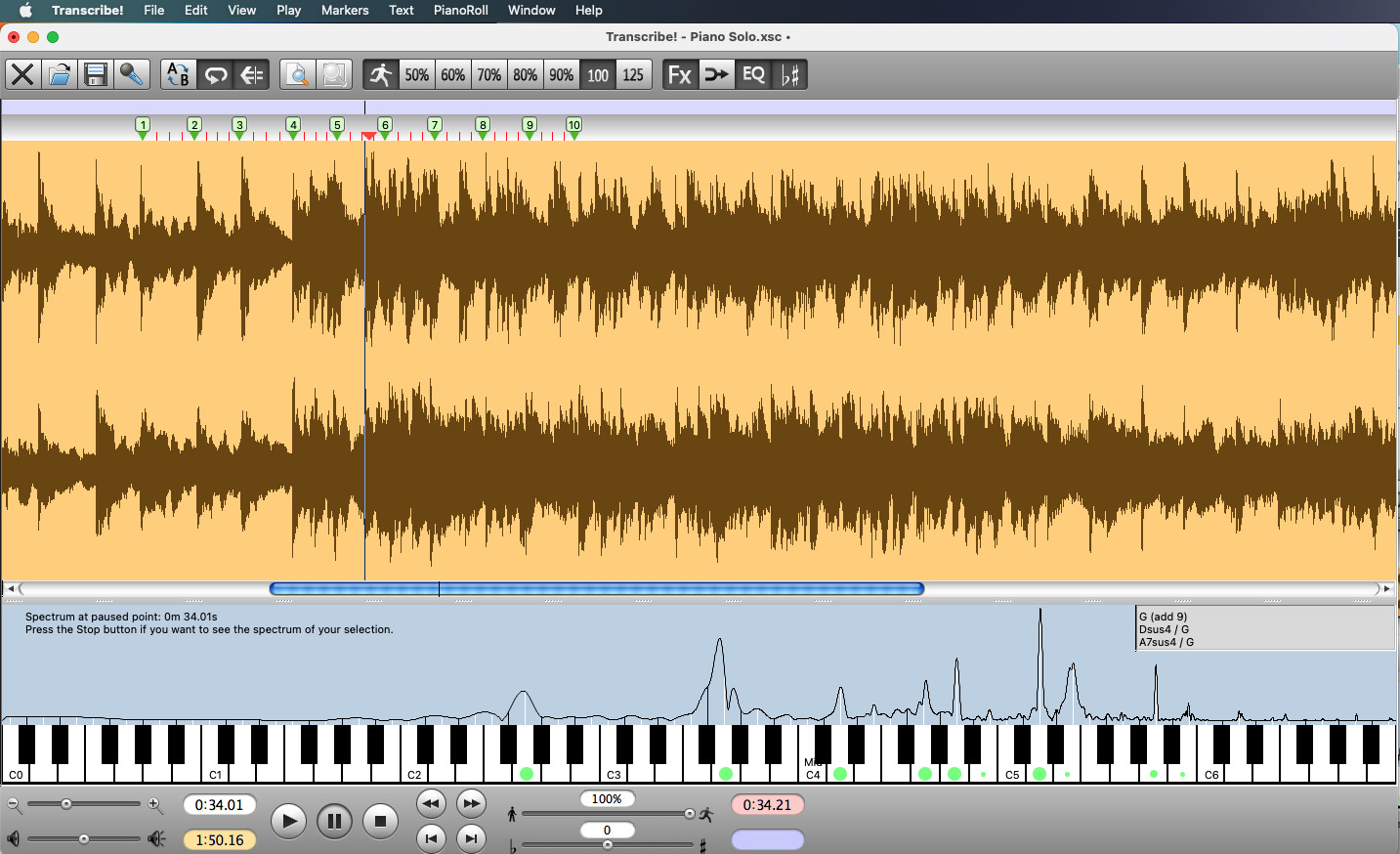
You also have at your disposal advanced editing features like EQ (to isolate certain instruments), karaoke (to erase vocals), tuning, and more. It’s also worth noting that Transcribe! offers foot pedal support for quick navigation of tracks.
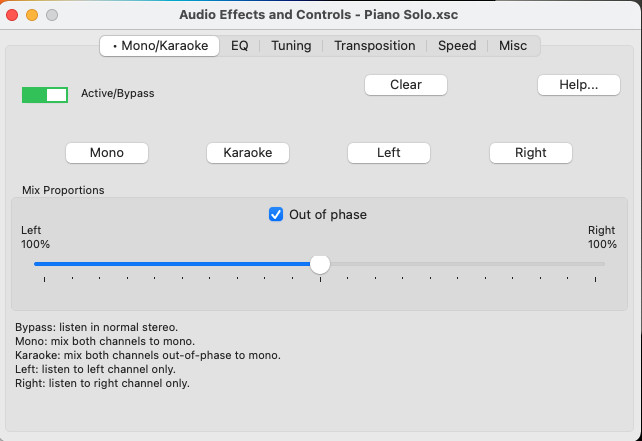
Transcribe! does not aim to be anything more than a transcription assistant. Those looking for a tool that offers music sheets instantly should look elsewhere. Another potential drawback is that you have to use an external music notation program for the actual transcription.
ScoreCloud
Price: Free, paid plans start at 4.99USD/ month with a 10-day free trial.
Who’s it for? Budding musicians looking for music transcription software for “musical doodling”.
Music notation can be frustrating for musicians who aren’t especially knowledgeable about music theory. When composing music, it is often helpful, necessary even, to write down your ideas. You can remain free and have fun in the compositional process with ScoreCloud as it does most of the transcription for you, leaving you to handle the minor tweaks.
As well as receiving Midi input, ScoreCloud can also process the audio directly from your laptop or phone microphone. Its algorithm supports polyphonic instruments, which means you could play a piano and ScoreCloud would translate both hands on the grand staff.

ScoreCloud has an intuitive workflow, which aids the creation process. The audio you record is saved as a musical snippet. At this stage, you do not have to worry about key signatures, time signatures, or even using a click track. But you can enable the click track if your composition uses a lot of syncopation.
Once you’re through with recording, you hit analyze. After processing your snippet, ScoreCloud outputs a neat, editable score.
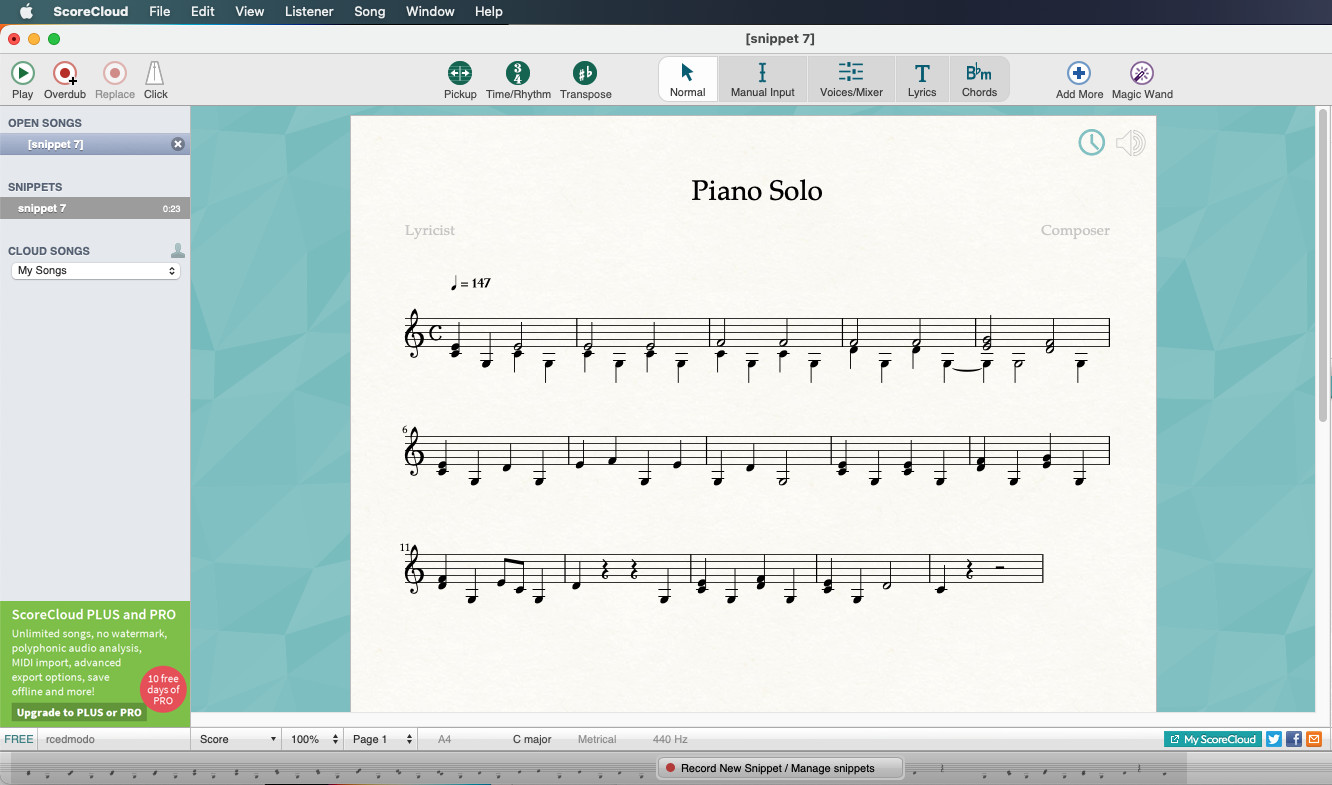
What is impressive is that in the simple recording above, the software recognizes two voices, and you can turn any of them OFF in the Voices/Mixer panel. There is room for manual editing, adding lyrics and chords, and of course, you can layer more instruments or a vocal track.
When using the voice recording mode, ScoreCloud handles melody modulation (key changes) perfectly well.
The software’s workflow is more effective when you have a basic understanding of music theory. In fact, I consider it a requirement since the step of manually editing the score following ScoreCloud’s transcription is necessary most of the time.
Here’s where things can get tricky. For one, it’s often easier to export the file in MusicXML format and manipulate the notes in something like MuseScore. I found the notation editor a bit too basic. For example, you can’t change the time signature midway. This drawback leads to another major one, which is that many notable features, such as recording polyphonic instruments, importing Midi, or exporting MusicXML files are reserved to the PLUS and PRO versions.
Overall, I’m still impressed by the software and its approach to helping musicians transcribe their songs, however, you’re going to need to pay to play to get the most out of it;).
Garageband
Price: free
Who’s it for? Musicians who record their music in a DAW and want to generate music notation from it.
Many people use a DAW for creating and arranging music. Not many people know that Garageband allows you to turn your recordings into sheet music instantly. As a result, Garageband also serves as a free music transcription program.
Too good to be true? Well, almost. The real answer is that it actually depends on what kind of data you give Garageband.
MIDI input
Midi files contain data that Garageband already understands, so if you’re recording a Midi instrument, the software automatically does the transcription for you. Once you record your Midi keyboard or instrument, all you need to do is click on it, and then view the Score Editor. You get a graphic file with the notes accompanying your recorded track.
Garageband does not have a full-fledged notation editor to layer voices on the same score. I wasn’t able to export to MusicXML format either, and for that it seems like you’d need a more sophisticated, paid software like Logic Pro or Pro Tools.
Nonetheless, if you are playing around with virtual instruments, creating a track you want, say, a jazz band to play later, you can get some great results.
Audio file
In the case of audio files, Garageband will not provide you with sheet music. For, instance, if you drop a WAV file into Garageband or record a vocal part, you don’t get the Score Editor option. Garageband needs a Midi file before it can output music notation.
Here are some options to get around this:
- To convert a single instrument / voice into Midi format, use Melodyne by Celemony. This plugin is used by professionals world-wide. (Versions start at €99, 30-day free trial).
- To convert a multitrack recording into Midi data, you need to first isolate the individual tracks. This is no easy task, but a few pieces of software that aim to do just this are:
- XRTAX STEMS (Starts at $40/ 6 months, 2-day free trial).
- Ripx DeepRemix
- Izotope RX 8
The success, with stem isolation, largely depends on the complexity of audio files (how many different instruments are used, etc.) that need to be processed. This can be a bit of a hit or a miss.
You need to take each isolated stem (may contain more than just a particular instrument!) and have Melodyne process it. Once Melodyne churns out standard Midi files, you can have your notated music in a click.
As you can see, there is a lot of room for error at each stage. So I recommend Garageband as a free music transcription software only for when you already have Midi or simple audio input.
Dorico
Price: Dorico SE 4 – free, Dorico Elements 4 – $99.99, Dorico Pro 4 – $579.99
Who’s it for? Musicians who prefer working within music notation software and want to obtain sheet music by simply playing into a Midi keyboard.
Steinberg’s Dorico 4 is a well-known and popular music notation software. It can transcribe polyphonic midi input, and is particularly good at handling keyboard music. The workflow is simple, and Dorico is definitely to be rated among the top music transcription software options, as it combines the features of music notation software and music recording software.
Dorico is essentially free music transcription software, as the “SE” version comes at no cost. However, you can purchase a premium version for added functionalities. I suggest using the free version for a while and upgrading if you find you need the extra features.
To transcribe music, select the measure you wish to start recording at.
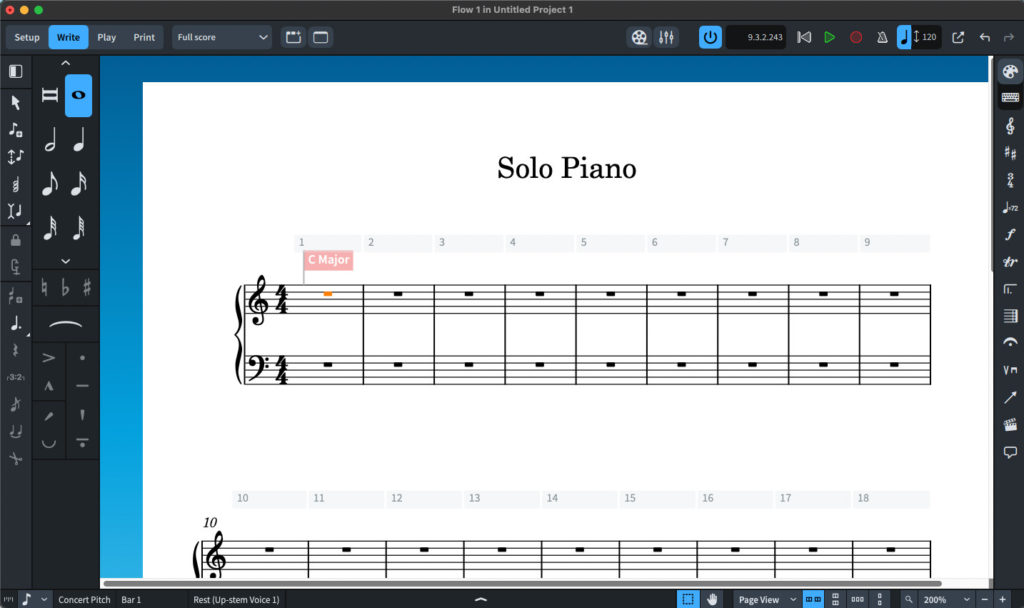
Go to the Play section and record with a Midi keyboard, as you would in your DAW.
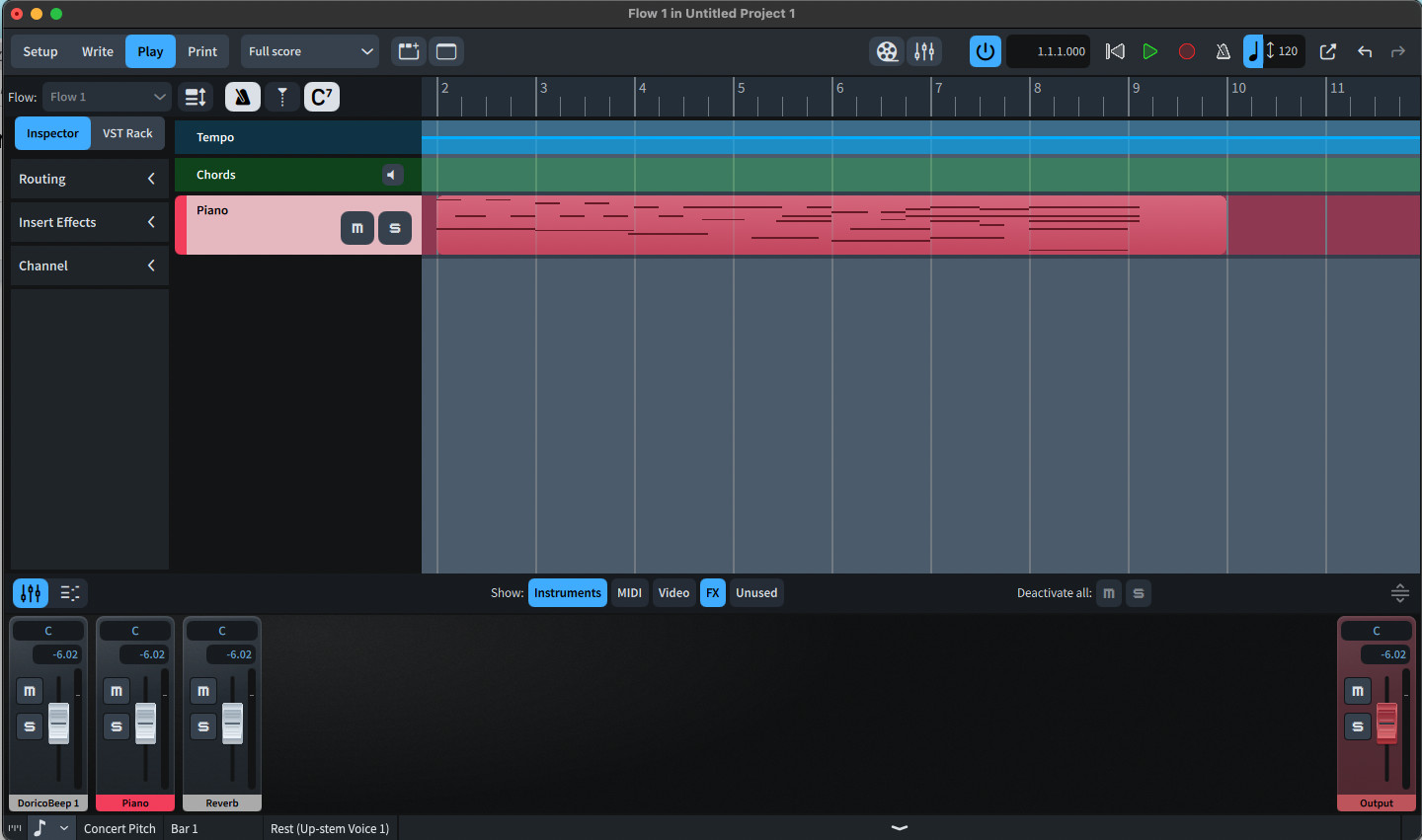
Once you are done, you have your sheet music ready for touch-up in the Write section. That’s it!
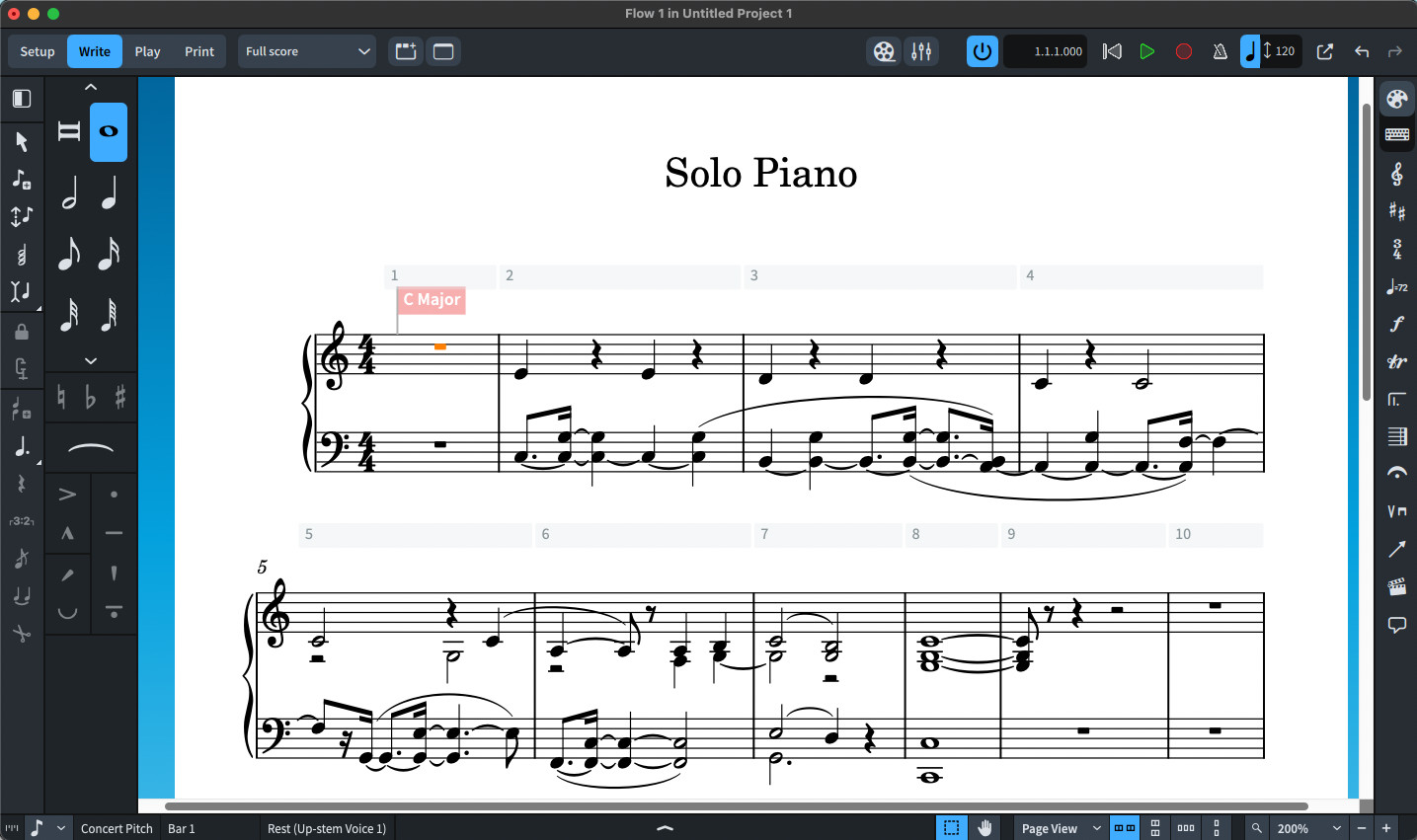
Fans of Sibelius or MuseScore might find it takes a while to get their heads around Dorico. There is a bit of a learning curve, which involves “re-routing” your workflow. Dorico promises to optimize your workflow, but for that, it requires that you slow down a bit and find new ways of doing things. It’s a new environment, and perhaps, not for everybody.
Also, you may want to keep an eye out for MuseScore 4, which intends to transform the existing program from being notation software to being composition software.
These, then, are 5 music transcription software solutions that aid with automatic music transcription or help you transcribe music faster. Each approaches the challenge of transcribing music from a different starting point. Use the software that helps you get the cleanest musical notation and in the fastest time possible!
